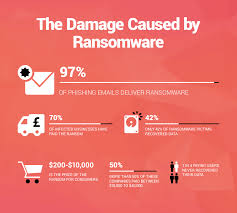RANSOMWARE ATTACKS 2017 HOW TO SAVE YOUR COMPUTER
.jpg)
Ransomware attacks 2017 The world’s biggest cyberattack has hit at least 150 countries and infected 200,000 machines since it started spreading last Friday. The victims include hospitals, universities, manufacturers and government agencies in countries like Britain, China, Russia, Germany and Spain. The list of institutions has grown as more become aware of hacks and as variants of the virus spread Ransomware attacks 2017 is the begest attacks in the world.
HOW RANSOMWARE WORKS (RANSOMWARE ATTACKS 2017)
At its heart, Ransomware attacks 2017 mimics the age old crime of kidnapping: someone takes something you value, and in order to try to get it back, you have to pay up.
For it to work, computers need to be infected with a virus, which is usually accomplished by tricking someone into clicking on a link.
Imagine, for example, you’re sitting at your computer and you receive an email that pretends to be from a well-known organization, like Fedex. The email says Fedex just tried to deliver a package, the delivery guy is still in the area, and if you click on the link, he will attempt to deliver it again in the next couple hours.
“It all looks so real,” Gazeley said. “They’re creating a sense of urgency, click on the link to get my parcel right now.
Ransomware attacks 2017 can also be spread by clicking on an attachment.
In recent years, emails used to distribute ransomware typically contained documents like fake mail delivery notifications, energy bills or tax returns, according to a 2015 report from security company Symantec.
Once users click on the link or attachment, the ransomware encrypts the computer’s hard drive, locking people out of computer files, including photos and music libraries.
A screen will appear threatening to destroy the files unless a ransom is paid.
.jpg)
HOW TO SAVE YOUR COMPUTER BY RANSOMWARE ATTACKS 2017
Ransomware attacks 2017 :- The worm is primarily impacting business, where it can spread quickly through a network to take down an entire company. Business take longer to install critical updates and patches, often to avoid impacting any legacy software they are running.
But individuals with PCs running Windows should still take a few precautions. First, install any software updates immediately and make it a regular habit. Turn on auto-updaters where available (Microsoft offers that option). Microsoft also recommends running its free anti-virus software for Windows.
If you don’t already have a backup routine, start now and regularly save copies of all your files. That way if your machine gets infected and your photos and documents are encrypted, you don’t need to worry about losing them.
Finally, always stay alert. Don’t click on links that you don’t recognize, or download files from people you don’t know personally.
It’s not just your computer that you need to be worried about. This attack has impacted many large services and organizations, including hospitals in England, a telecom and natural gas company in Spain, and FedEx. Basic services that impact your life could be impacted even if your own machine is clean.